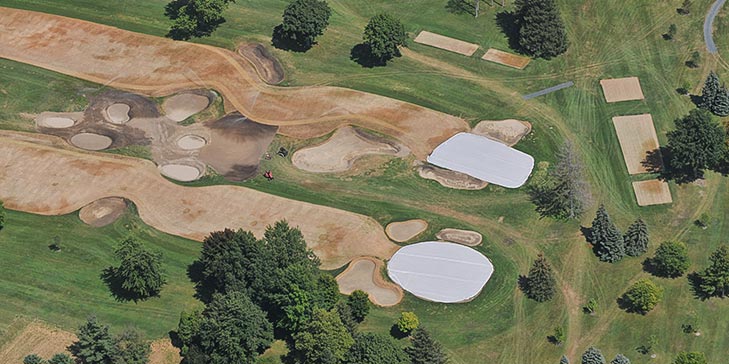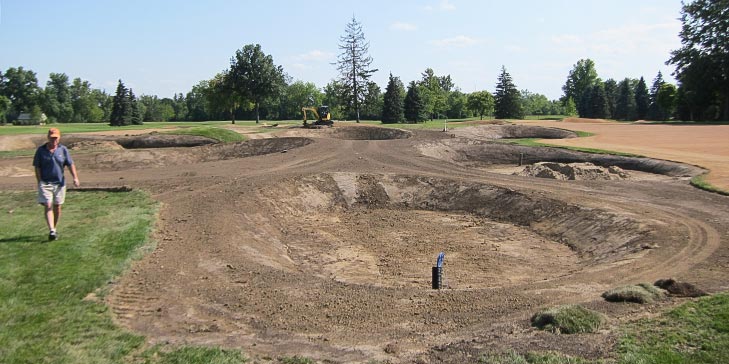Inverness Club in Toledo, Ohio, has completed a twelve month project to regrass its playing surfaces to reduce the need for fungicide applications, while at the same time returning the greens to the shapes originally designed by Donald Ross.
Architect Shawn Smith of Toledo-based design firm Hills & Forrest, which has consulted at Inverness for over twenty years, led the project, which began last August.
Inverness’ Ross course debuted in 1919, holding the first of its four US Opens the next year. Distinguished by the slopes and swales of its glacially formed terrain, the course has also hosted two PGA Championships, the US Amateur, and two US Senior Opens.
Over the late summer and fall of 2013, Hills & Forrest oversaw the regrassing of Inverness’s greens, tees and fairways, using disease-resistant grass types which would reduce the need for fungicides. “Our research told us that the grasses we selected would also produce exceptional playing conditions and true putting surfaces,” noted Doug Spencer, club member and green committee chairman. “But you're never completely sure until you actually experience how good they truly turn out to be.”

After study of the club’s archive, Hills & Forrest recommended using the regrassing project as an opportunity to restore the club’s historic greens, echoing as closely as possible the original shapes laid out by Ross. The restoration therefore squared off the corners to match the old fill pads and recapture cupping areas long lost through the attrition of normal maintenance practices, which tend over time to create smaller, rounded greens.
Inverness’ fairways were also restored to their original character by expanding their width and eliminating the patches of rough formerly stretching between the fairways and the bunkers. The restored fairways spill directly into the front edge of the bunkers, reestablishing the strategic value envisaged by Ross. “All of the bunkering was re-examined”, said Shawn Smith. “Six new bunkers were added, two bunkers were eliminated and seventeen bunkers were shifted or deepened in order to provide a better challenge to longer hitters. All of the bunker faces were grassed with fescue, facilitating the more rugged look Ross’s original bunkering style featured.”

Doug Spencer said the thirteenth hole was particularly affected by the work. “The two things that members continue to comment about is how awesome the bunker work is, along with the fairway cut which goes down the hill on the thirteenth hole, restoring the strategic value of the left fairway bunker,” he said.
The combined tee complex for the first and tenth holes was also rebuilt, lengthening the holes and enhancing the views from the first tee.